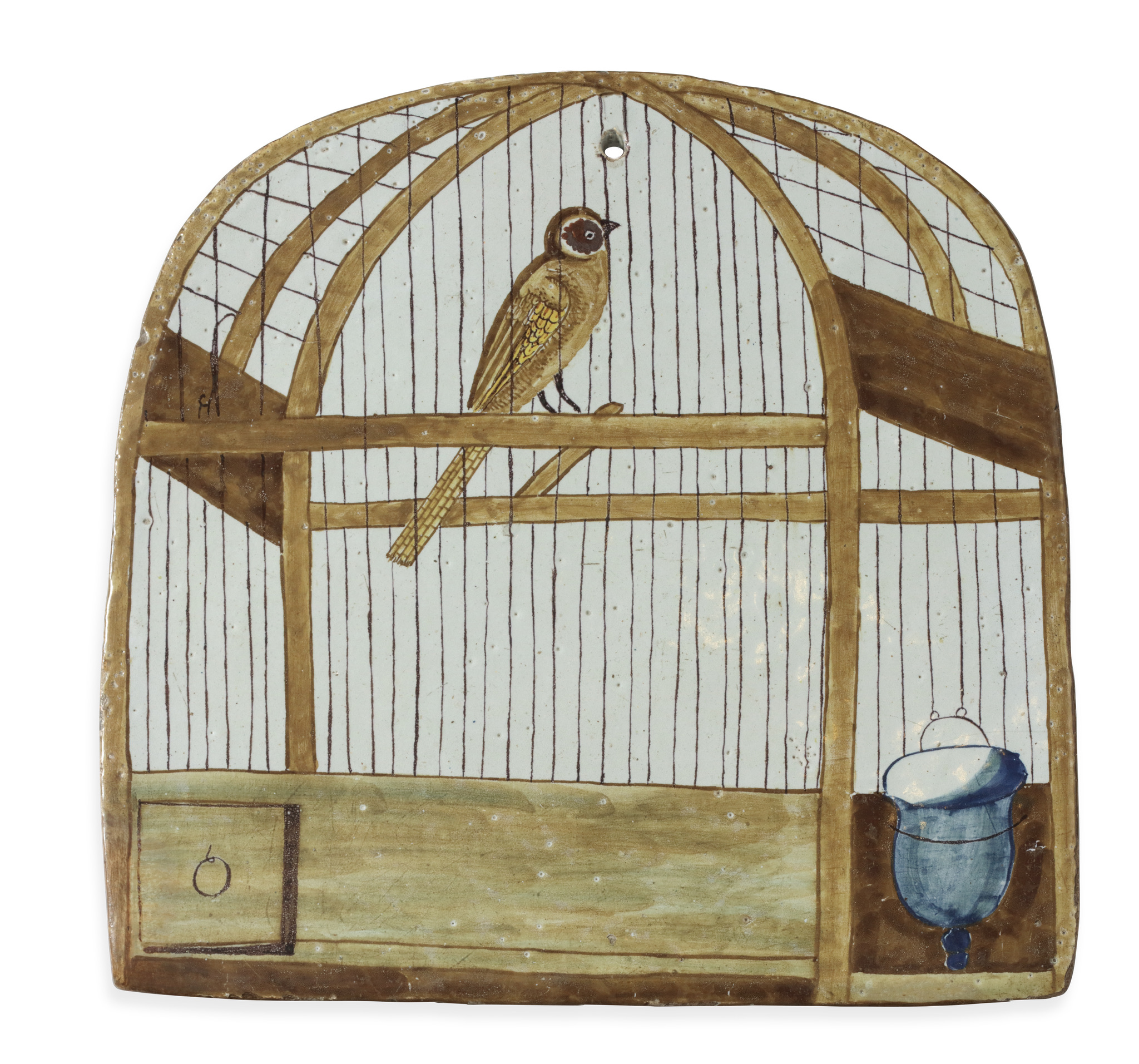![]()
Images on this website are licensed under a
Creative Commons Attribution-NoDerivs 3.0 Unported License.
OBJECT
•D2340. Polychrome Birdcage Plaque
Delft, circa 1760
Painted with a yellowish brown bird, perched on a wooden stick, within a wooden cage with a blue water cup suspended at one end, and the arched top pierced with a hole for suspension.
DIMENSIONS
Height: 25.3 cm. (10 in.)
NOTE
In addition to spices such as pepper and cinnamon, the VOC brought countless exotic animals from Asia to the Netherlands in the seventeenth century. Among these animals were exotic birds, which functioned as pets in the Netherlands. The importation of animals is consistent with the increasing interest in nature as evidenced by the menageries, aviaries and cabinets of natural curiosities that many enthusiasts collected. In the seventeenth century, birdcages were often suspended from the ceiling by ribbons or cords and decorated on the underside with a beautiful design. They were prominent in the interior of the well-to-do and enhanced the living space in which they were situated. However, birdcages did not lend themselves well to an earthenware version. Since fragile objects like birdcages have a tendency to distort or even collapse altogether in the kiln, birdcage plaques were a suitable substitute.
Birdcage plaques were typically part of the architectural scheme of a room, sometimes set within a wall amongst other tiles. The trompe l’œil decoration was an intended effect to seamlessly blend into the interior, and perhaps match the room’s decorative trimmings. This birdcage plaque demonstrates the trompe l’œil (deceive the eye) technique, a style often used in old master paintings to captivate and fool the viewer. The Delft potters probably took inspiration from seventeenth-century still life paintings with trompe l’œil effects. The present plaque shows a scene with painted depth and realistic details, which were intended to create an optical illusion. Birdcages painted with realism are also commonly depicted in seventeenth-century genre paintings as well as trompe l’œil paintings. The taste for birdcages was widespread; the plaques were made in Delft as well as Northern Dutch factories.
SIMILAR EXAMPLES
Birdcage plaques of this form with minor variations are illustrated by Lahaussois 1994, p. 124, nos. 154 and 155; Lavino, p. 117 (top right); Morley-Fletcher and McIlroy 1984, p. 232, no 1; Vandekar 1978, p. 11 (top left); and Aronson 2007, pp. 70-71, no. 53 and 2019, pp. 136-137, no. 69.









